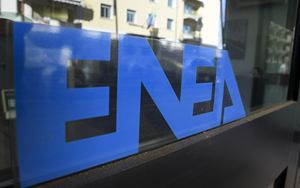(Finance) – From 13 December, at the research centre AENEAS of Bologna, has entered into operation and will be available to the public on first Italian Mirror by Software Heritage, the archive that collects, preserves and makes accessible the source code of all publicly available software in the world. An international, non-profit initiative of great cultural, social and scientific relevance, promoted by INRIA, the French Institute for Research on Informatics and Automation, in cooperation with UNESCO. “We are proud to welcome ENEA – says PProfessor Di Cosmodirector of Software Heritage – as the first European institutional mirror of Software Heritage, and we look forward to exploring together the opportunities opened up by this collaboration.”
The goal of this digital library is to preserve a heritage that is an expression of the ingenuity, intelligence and culture of the modern world. Anyone who wants to can browse through this very special archive, among codes and algorithms that solve mathematical problems and reproduce models of complex systems according to the way science and technology proceed dictated by the advent of computers. For example, navigating this sea of codes, you may come across the code that drove the on-board computer of Apollo11, which 50 years ago brought man to the moon, or TAUmus, one of the first software in the world for computer music, created in the Seventies thanks to the collaboration between a musician, Maestro Pietro Grossi, pioneer of electronic music, and researchers from the National University Center for Electronic Computing in Pisa.
Specifically, the ENEA Center in Bologna will preserve a mirror, in Italian a mirror, that is a replica of the entire archive, which today includes more than 17 billion source programs; the intent is to guarantee its safety and continuous availability. Not only that: access to a similar mine of codes and algorithms will give the possibility of studying and analyzing them, developing methods to obtain information and new knowledge from them; thus in analogy with what happens for i Big Data, we can talk about “Big Code”, where however the large amount of source codes is used to train Artificial Intelligence for the automatic generation of software. “Important work has been carried out in terms of growth of storage infrastructure and technological innovation in the ICT sector – he declares Giovanni Pontihead of the Division for the Development of IT and ICT Systems of ENEA – who has led the design and implementation of the Software Heritage mirror in ENEA in recent years”.
The initiative is part of a broader context which sees the arrival at the Bolognese Tecnopolo of the European Meteo Data Center and of Leonardo, a supercomputer destined to rank among the top five in the world which makes Bologna and the Emilia-Romagna Region an international hub of High Performance Computing and Big Data.
